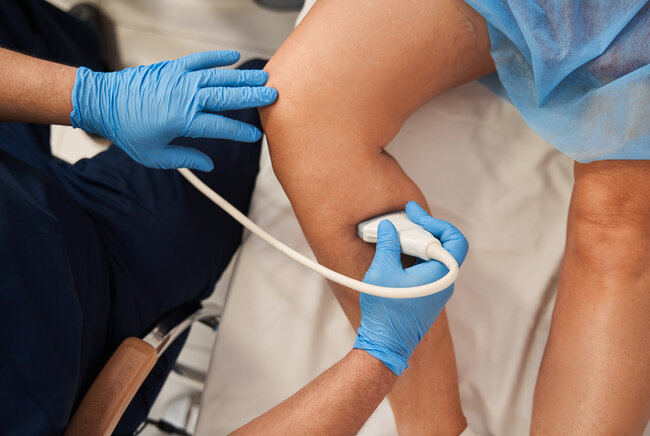Ultrasound Guidance in Perioperative Care
Harm Scholten defended his PhD thesis at the department of Electrical Engineering on April 20th.

Ultrasound can make blood vessels and nerves, as well as needles, visible using sound waves. This has made the placement of IVs and nerve blocks more successful and safer compared to ‘blind’ landmark techniques. However, in both procedures, there is still a small percentage that fails or has complications, and ultrasound is not always used. In his PhD research Harm Scholten took a closer look at the use of ultrasound guidance in anesthesiology and intensive care and techniques or modifications to make its use more effective and safe.
In the first part of the thesis, the background of how ultrasound guidance made its way into medicine and the current state of practice in anesthesia and perioperative care is described. An overview of existing additional technologies aimed at better recognition of the needle tip (such as magnetism, optical feedback, 3D/4D imaging, or image-based algorithms) during ultrasound-guided procedures is presented. Unfortunately, few robust clinical trials with improved patient-related outcomes exist in this field. Furthermore, a survey among Dutch anesthesiologists showed that despite convincing evidence stating the superiority of ultrasound-guidance for certain vascular access procedures, still a significant number of professionals prefers the blind technique. However, the provided arguments like perceived lack of benefit and lack of equipment are hardly justifiable.
Solutions for ultrasound guidance
The second part looks at some of the inherent limitations of ultrasound guidance, accompanied with possible solutions. For instance, the width of the ultrasound bundle makes it possible that needles placed outside the center of the bundle can be displayed as if they are situated directly under the probe. This so-called beam width artifact can negatively influence superficial in-plane procedures, since a needle tip can appear the same on the ultrasound image, whether it is placed inside or just outside a vessel. Notably, the beam width artifact also hinders experienced users in their performance. As the portability of handheld devices makes them very suitable for point-of-care vascular access procedures, the beam width of some popular devices was investigated as this information is not readily available. For some handheld devices, the beam width varies between 1 and 4 mm, which is of significant proportion for superficial procedures as this is the range of vessel diameters. Therefore, this knowledge is important for users of handheld devices. Furthermore, ultrasound-guided procedures are performed based on estimations of the user about where to insert the needle relative to the probe and at what angle, and thus are prone to error. Providing visual clues using a display on an ultrasound transducer, suggesting the needle entry point, angle of approach, and depth of the target, significantly improved performance of needle tip placement, again both by inexperienced and experienced users.
Added value
The last part seeks solutions for the above-described limitations. Biplanar imaging, showing a long-axis and a short-axis view simultaneously, failed to demonstrate superiority over conventional 2D ultrasound for both internal jugular vein or radial artery catheterization in clinical trials. Perhaps a slightly lesser image quality and minimal increased mental workload offset the theoretical benefits of biplanar imaging. Finally, an image-based needle recognition algorithm shows robust needle detection in ex-vivo experiments; however, the computational time at the present moment precludes real-time imaging and thereby its use in clinical practice.
Highly user-dependent
The conclusion of this thesis is that the performance of ultrasound-guided techniques in operating theaters and intensive care is still highly user-dependent. In the future, specific adjustments for superficial interventions, fast algorithms for 3D needle detection, or a combination of different needle tip recognition technologies may improve relevant patient-related outcomes in ultrasound-guided interventions.
Title of PhD thesis: 'Ultrasound Guidance in Perioperative Care'
Supervisors: Erik Korsten, Peter de With and Arthur Bouwman.